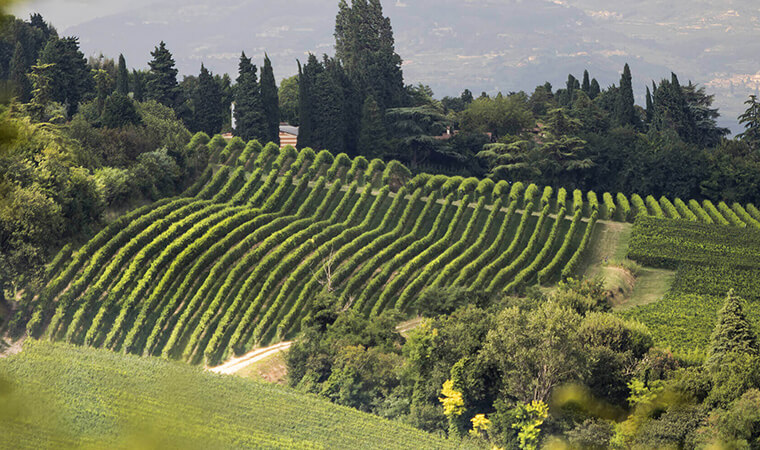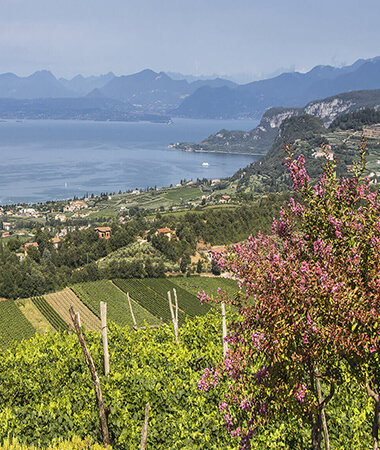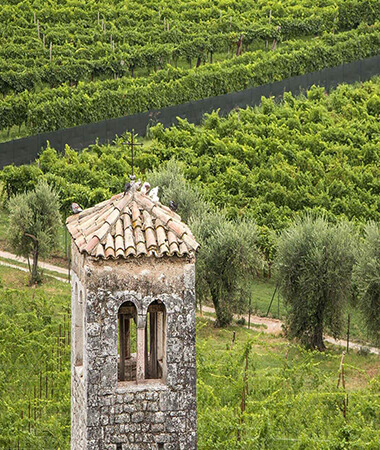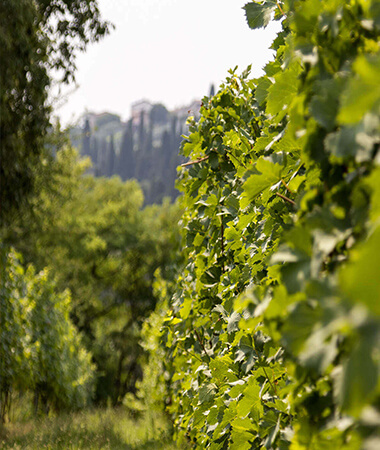Bardolino
Type: Red wine
Disciplinare (regulations)Bardolino is an Italian Doc red wine produced on the shores of Lake Garda, in Northern Italy, 30 minutes away from Verona by car. It gets its name from the lovely village of Bardolino overlooking the lake.
Evidence of vine cultivation in the area dates back to the Middle Ages, when local monasteries inherited the art of wine making from the Roman tradition and helped passing it down to present day. Wine ageing potential became clear during the XIX century when the region started to be renowned for the quality of its wines, by then called Bardolino wines. The reputation of the region kept growing: in written documents people refer to Bardolino wines either as "quality wines", "wines suitable for ageing".
Bardolino was finally awarded the Doc on the 28th May 1968, thus resulting to be amongst the first Doc in Italy – the Denomination of Origin was introduced in the country in 1963.
Bardolino Consortium was created soon after, in 1969. From 2012, with the entry in force of Erga Omnes regulation, the Consorzio is in charge of the proactive safeguard of the appellation, carried out through quality control processes and promotion events, both in Italy and abroad. According to the new “Disciplinare” (Procedure Guideline) which has been approved by local vinegrowers in 2018, starting with the 2020 vintage Bardolino will be produced with a blend of maximum 95% Corvina (at the present moment the limit is 80%) and Rondinella (minimum 5%, maximum 40%, at the present moment minimum 15%). Other grape varieties allowed to be cultivated in the area can be used for a maximum of 20% and with a 10% limit for each variety (except for Molinara, allowed up to a maximum of 15%). With its new “Disciplinare” Bardolino has concentrated its efforts in promoting three different historical sub-zones: La Rocca, Montebaldo and Sommacampagna. In doing so, Bardolino underlines its strong link with the territory and can better interpret the terroir. Bardolino La Rocca represents the ancient Bardolino district, Bardolino Montebaldo stands for the foothill area of Monte Baldo (known as the Botanic Garden of Europe thanks to its biodiversity) and finally Bardolino Sommacampagna accounts for the southern hills.
For the production of Bardolino and Bardolino subzones only "fresh grapes" can be used whereas raisined (dried) grapes are prohibited - as it was in the previous Procedure Guideline. In promoting its historical sub-zones, La Rocca, Montebaldo and Sommacampagna, Bardolino underlines its strong link with the territory and offers the consumer a better interpretation of the terroir. The decision allows the zoning project to become real and effective. The first zoning attempts were carried out in 2005 and have subsequently been developed through the 2015 "Bardolino Village" project. However, the identification of the three areas dates back to the end of the 19th century when the scholar Giovan Battisa Perez carefully portrayed them. At that time, the best wines from the area were exported in Switzerland to be served along with wines from Bourgogne and Beaujolais.
Changes up the stakes of Bardolino's reputation and ageing potential, moving from a daily wine to a wine that can be aged for 5-6 years. Ageing potential is provided also by Bardolino noticeable freshness. But where does this freshness comes from? The mystery about minerality can be solved when having a closer look at the soil. The morainic hills where Corvina is grown were created by ancient glaciers which took the rocks from the mountains and moved them downwards. Therefore, despite being produced in the very mild climate of Lake Garda smooth hills, surrounded by olive groves, Bardolino can be considered a wine from the mountains.





